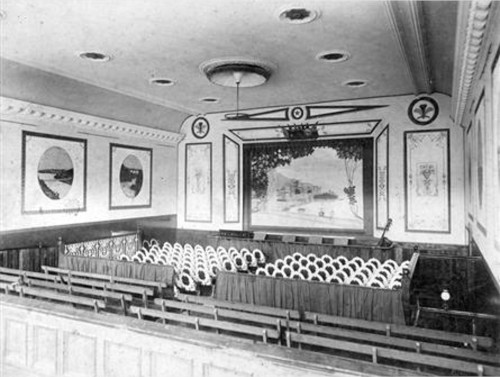Pollard Lilliputian Opera Company

Not one of the audience at the crowded Launceston’s Mechanic Institute on 17 May 1880 would have predicted that the first performance of this very musically gifted troupe of children of the Pollard Lilliputian Opera Company would continue over the next thirty years to delight audiences around the world. Initially most of the children of the Company comprised of the seventeen talented children of James Joseph Pollard, the Father of the Company, augmented by other local children.
In the nineteenth and early twentieth centuries professional children’s theatre was an established part of public entertainment. Some troupes enjoyed enormous success, roaming the world impersonating roles which had been written for adults. The Pollards was one such company who received world acclaim. They toured many times throughout Australia, New Zealand, the Orient – embracing China, Japan, the Philippines, India, Java and other Eastern countries – the United States, Canada and South Africa.
The picture is a view of the interior of the Bijou Theatre, St John Street, Launceston (Queen Victoria Museum and Art Gallery)
Emigrants to Tasmania on the Trade Wind arriving 1858

The story of the 107-day voyage to Tasmania from England in 1857 of the Trade Wind. Most of the passengers were bounty immigrants, recruited on behalf of the Launceston and Hobart Immigration Societies. These Societies were formed because the Van Diemen’s Land (and later the Tasmanian) government was anxious to recruit labourers from Britain; particularly farm labourers of a ‘better class’ than the free convict labour that had been provided to landowners prior to the end of transportation in 1853.
Many died of typhoid fever and/or whooping cough on the voyage. The debility and deaths were attributed mainly to insufficient provisions, medicines, fresh water, ventilation and inappropriate cooking apparatus leading to burnt and spoilt inedible food. There was severe overcrowding with more than two and a half times the amount of adults on board than was legally allowed. Violence and mistreatment of the passengers by the crew was a common occurrence.
The Ill-fated exploration on the Erebus in search of the North West Passage

For more than 170 years the descendants of my maternal GGG Grand-father, James Whitelock Brown, have tried to have the mystery surrounding both the cause and location of his death unravelled. Although a step closer for some families who lost their life in the same dangerous expedition to the Arctic it is unlikely James’ definite fate may ever be resolved.
The obvious place to tell James’ story is at the very beginning. James Whitelock Brown was baptised on 6 May 1817 at St James Parish Church in Deptford, now known as SE London. Deptford’s population was mainly associated with the docks since the establishment of the Royal Docks by Henry VIII in 1513 where ships were built for the Royal Navy. Deptford was a very prosperous area, particularly in time of war, but the good times ended when ship building on the Thames declined after 1815. James was born soon after this decline commenced. The Dockyard closed in 1869.